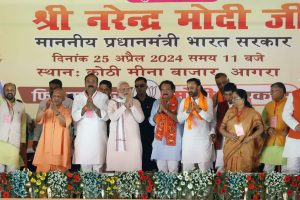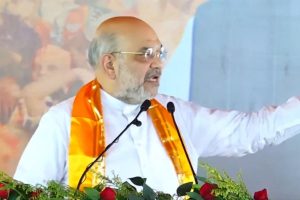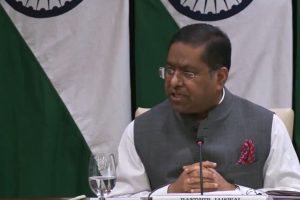Perhaps in no other part of India does the merit list of the School Board examinations creates as much inquisitiveness as it does in Bengal. People of the State, in general, are fond of discussing the academic performance of their favourites. With the tone of appreciation, they will say such and such a person came second in the Matriculation examination and first in honours examination in such and such year and so on. That person might have done well in his exams five decades back, yet it remains a point of discussion. If that person failed to achieve much in his subsequent professional life, that is regarded as his ‘bad luck’ and nothing else because his real worth already stands decided by his performance in the Matriculation examination. This unique character of Bengal has its root in her value system where, rightly or wrongly, high value is attached to academic excellence in social life. When it comes to school leaving examinations, the importance of the State Board was overwhelming till the 1980s.
Schools affiliated with CISCE were few and those affiliated with CBSE were almost non-existent in Bengal. Things gradually changed after the Left Front government in the State abolished teaching of English as a subject at primary level in the State-run schools (1982) and the State Board stopped giving affiliation to new schools preferring to impart education in English at the primary level. That policy of the State Government led the urban middle class to enrol their wards in English medium schools. New English-medium schools, run by private trusts or by corporate houses came in large numbers to be affiliated with CISCE and CBSE Board. Gradually the importance of the State Board started waning, at least in urban areas. Conservative marking in the exams of the State Board was also one reason for guardians to prefer schools affiliated to other Boards.
In the 1960s, top 10 positions in West Bengal Board exams were mostly captured by pure government schools viz. Hindu School, Ballygunge Government High School, Hare School, Bethune Collegiate School and Zilla Schools of the districts. In those days toppers of the Board got around 80 per cent marks and there were at most eleven or twelve students to come in top ten positions. The toppers were mostly from Calcutta or neighbourhoods coming from educated upper-class families. Very few girls in those days came in the top ten ranks. Also rare was the presence of Muslim students amongst toppers. In the next two decades, the presence of students of government-run schools in top ten positions declined and schools like South Point, Ramakrishna Mission and the Christian Missionary Schools came to the forefront of the West Bengal Board exam. After the 1990s, however, there was a paradigm change when the proportion of rankholders from the schools of Calcutta and neighbourhood started declining and students from mufassil schools started doing better.
The student community in Calcutta at that time wondered whether there was any bias playing against them in the WB Board exam. However, Calcutta schools maintained their predominance amongst top performers from the State in CISCE and CBSE Board examinations. This trend has strengthened in the last few years. Many wellknown English medium schools run by the corporates shifted away from the State Board and took affiliation of CISCE or CBSE. The students from schools from Kolkata and the neighbourhood are rarely found nowadays amongst the toppers of the State Board examination. In the last few years, the State Board has become as liberal as CISCE or CBSE in awarding marks and toppers are getting around 99 per cent. The top ten positions in Secondary Board (Madhyamik) examination of West Bengal this year were shared by an unprecedented 113 candidates.
Three decades back, Star-marks (75 per cent and above in total) and Letter marks (80 per cent and above in one subject) were the thresholds of good performance. Nowadays no one is aware of those benchmarks. This year, 87 per cent of the students appearing in WB Board examination passed whereas in 1976 (last year of the old HS system), out of 186,000 students, 126,000 had failed (68 per cent) and only 2.2 per cent of students secured the first division. Are better pass percentages and higher scores of students a reflection of better teaching standards in the schools or do they reflect only a change in the marking pattern of the Boards? In the last three decades or so there has been substantial improvement in the infrastructure of schools in smaller towns and villages which partly explains higher percentage of students passing the exam or a higher percentage performing better.
The improved performance of the less known mufassil schools is indicative of the spread of educational infrastructure in Tier-2 and Tier-3 towns. This is happening with the schools affiliated with all Boards. But the spectacular scores of students in general in recent decades is explained more by the liberal attitude of the Board in awarding marks. It is heartening to see a greater number of girl-students turning out to be rank holders. Amongst the rank holders many are found to be coming from the Muslim community. Many of the rank holders now belong to backward or reserved castes and tribes. These are all reflective of a changing social milieu. Change in the attitude of the Secondary Board and Higher Secondary Council of West Bengal in awarding higher marks to candidates are commensurate with the policy of CISCE, CBSE and other State Boards.
In a world of competition, it is meaningless to make students of one Board suffer due to conservative evaluation. However, maybe in another ten years, almost a hundred percent of the students will pass the Board exams and anyone scoring less than 100 per cent will not be a rank holder. What next? Will those marks serve any purpose in the process of selection of students for higher courses or in the job market? It is perhaps high time that different Boards in India consider more meaningful ways of evaluation. Absolute marks (raw or standardised) are hardly indicative of the merit of a student across Boards. Merit is always a relative term. The performance of the student in the form of percentile scores: one that reflects the score of an individual vis-à-vis the score of the others, in different subjects as well as in total could be more meaningful and indicative of his performance. It is high time different Boards in India explore that option.











